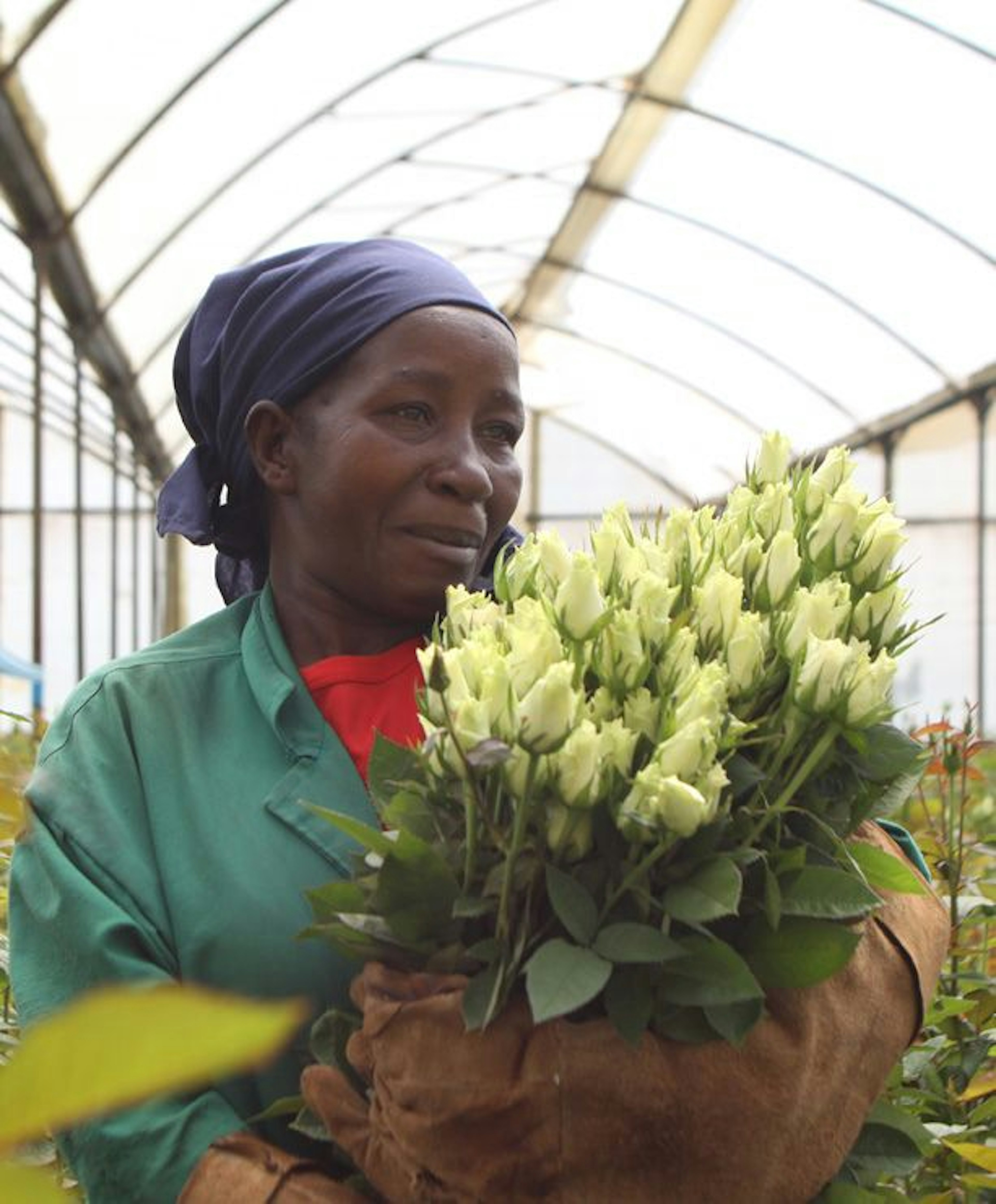Flowers

Overview
Cut flowers bring joy and colour into everyday life. However, in many countries flower production comes with risks, notably low wages, poor working conditions and high environmental impact.
Flower production is an important source of livelihood for many. The sector employs 150,000 people directly and an estimated two million indirectly in Kenya alone.
The Netherlands, Ecuador and Colombia are the top producer countries, followed by Kenya and Ethiopia. Flowers are exported mainly to Europe and North America. Fairtrade teams up with flower workers mainly in East Africa and Ecuador, where most greenhouse workers are women.
Cut flower supply chains are affected by tight timelines: to stay fresh, they need to reach customers soon after harvesting. Nowadays, cut flowers can be on sale in a shop within 24-48 hours of being picked.
The salient issues in the flower sector are (in the order of saliency):
- Living wage
Flower farm workers rarely earn a fair wage. In Kenya and Ethiopia, workers are paid only 50–65 percent of the living wage. In Ecuador, the law provides for higher wages but even there the pay is not enough to cover basic needs.
- Working conditions
Greenhouse work is mostly manual and overtime is often common, particularly during the high seasons when production demands go up. Lack of protective gear poses risks for workers’ health.
- Water & Biodiversity
Flower production is water intensive. Farms are often located in areas of high biodiversity, leading to greater risk of soil degradation, pollution, water shortages and floods.
- Gender equity
The global flower sector increases the economic autonomy of women, but wage discrimination and sexual harassment are present in many cases. Lack of adequate childcare facilities combined with long workdays increase the burden on parents, especially mothers of young children.
- Freedom of association & Collective bargaining
Problems with freedom of association are common in, for example, Ecuador and Ethiopia. Ecuador has a long history of union busting, and discrimination against unionised workers has been reported in Ethiopia.
- More information on risks in flowers

Root causes
Inequal power relations: European and North American buyers and regulators largely dictate production standards in global flower value chains. Flower production may also benefit from and amplify existing disparities within producer countries, such as access to land and water.
Poverty and unemployment: Lack of alternative livelihoods make workers vulnerable to unfair terms of employment, such as low wages and poor working conditions.
Weak law enforcement: Poor law enforcement enables bad practices, such as low wages, poor working conditions and irresponsible use of chemicals.
Patriarchy: Patriarchal gender roles impact women’s livelihoods and safety. Women often work in lower paid jobs while men hold management positions. Societal norms rooted in patriarchy also enable sexual harassment and create barriers to reporting such incidents.
Climate change: Climate change affects water circulation and can cause floods, storms and droughts. These changes in water patterns can be detrimental to the flower industry.
Background data on flowers (*Global Volume / **Fairtrade Volume)
Largest producer countries*
- Netherlands (46.7%)
- Colombia (19.7%)
- Ecuador (9.4%)
- Kenya (6.3%)
- Ethiopia (2.2%)
- China (1.5%)
- Others (14%)
Source: ITC Trade Map 2023..
Dominant production model*
of Kenyan cut flowers are produced on large-scale farms.
Source: Eaglelink Flowers n.d.
Fairtrade certified producer organisations**
Data from 2022.
Fairtrade certifiable production**
thousand stems in 2022.
Workers in Fairtrade organisations**
Data from 2022.

Stay updated
Partnering for change
Companies can be part of the solution by identifying and addressing the most serious risks and root causes in collaboration with farmers, workers and other affected people. Sign up to receive updates as we add new information to this Map, or to hear how Fairtrade can support your corporate sustainability due diligence.
Map View